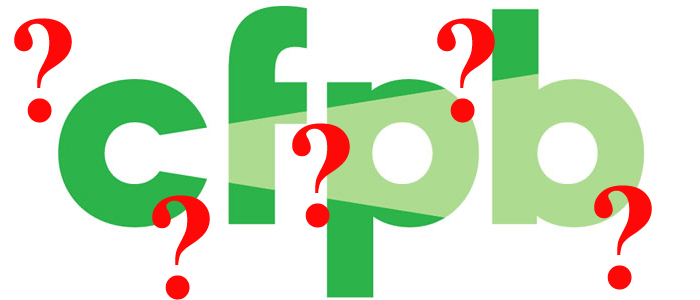What You Need to Know About The CFPB and Small Business Lending

On Wednesday, the Consumer Financial Protection Bureau (CFPB) held a hearing on small business lending. Here’s why it mattered and what you need to know:
Why: The 2010 Wall Street Reform and Consumer Protection Act, aka Dodd-Frank, empowered the CFPB to collect data on small business lending. The CFPB is just now getting around to rolling this out. The purpose is to facilitate enforcement of fair lending laws and enable communities, governmental entities, and creditors to identify business and community development needs and opportunities of women-owned, minority-owned, and small businesses. In short, to determine if women and minority-owned businesses are operating on a level-playing field when it comes to accessing credit.
Who: “I’m an MCA funder, factor, equipment lessor or other, and this only applies to lenders right”?
Maybe, maybe not. Although Section 1071 makes several references to loans and credit, it doesn’t refer to the companies subject to data collection as small business lenders. Instead it says financial institutions which it defines as “any partnership, company, corporation, association (incorporated or unincorporated), trust, estate, cooperative organization, or other entity that engages in any financial activity.” That sounds incredibly broad.
What: What are they trying to collect?
- the number of the application and the date on which the application was received;
- the type and purpose of the loan or other credit being applied for;
- the amount of the credit or credit limit applied for, and the amount of the credit transaction or the credit limit approved for such applicant;
- the type of action taken with respect to such application, and the date of such action;
- the census tract in which is located the principal place of business of the women-owned, minority-owned, or small business loan applicant;
- the gross annual revenue of the business in the last fiscal year of the women-owned, minority-owned, or small business loan applicant preceding the date of the application;
- the race, sex, and ethnicity of the principal owners of the business; and
- any additional data that the Bureau determines would aid in fulfilling the purposes of this section.
How: Great question. The law says that where feasible the underwriter or analyst isn’t allowed to know if the business is woman-owned or minority-owned and that this information must be captured separately and kept secret from the underwriter. The section is actually called the “NO ACCESS BY UNDERWRITERS” section. Oddly, as this applies to all small business lending, not just faceless transactions, one wonders how an underwriter is supposed to avoid discovering the gender or ethnicity of the applicant. It is possible that in 2009 when this section was drafted, the architects could not imagine a business lending universe that looked beyond FICO scores and balance sheets.
When: It’s still early days. Right now the CFPB just wants to know everything about what these “financial institutions” do and how they do it before they start requiring the data be collected. To that end, they’ve published a Request For Information, seeking voluntary responses so that they can start formulating the data collection framework in a way they believe best.
Where: Where can you read and watch more about this? We’ve got some information on this page here, including a video of the hearing.
What should I do? Should I do anything?
Join an industry trade association. When it came to the proposed regulation in New York, they did most of the heavy lifting. There are many to choose from depending on your business model. In New York though, the regulations were purely proposed. Under Dodd-Frank, the CFPB already has the power to collect data. They’re just finally getting around to using it. Last modified: January 12, 2020
Sean Murray is the President and Chief Editor of deBanked and the founder of the Broker Fair Conference. Connect with me on LinkedIn or follow me on twitter. You can view all future deBanked events here.































